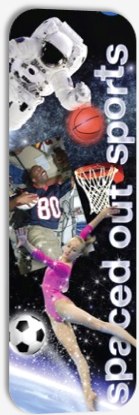 During this week’s NASA Now program, you’ll meet Michael Studinger, Project Scientist for Operation IceBridge. He’ll describe the purpose of the IceBridge campaign and how the campaign objectives will be met. He also explains why studying Earth’s ice is important for understanding climate changes and how they related to humans.
During this week’s NASA Now program, you’ll meet Michael Studinger, Project Scientist for Operation IceBridge. He’ll describe the purpose of the IceBridge campaign and how the campaign objectives will be met. He also explains why studying Earth’s ice is important for understanding climate changes and how they related to humans.
Tag: Middle School Students
DLiNFocus: NASA Careers ‘What’s in Your Future?’ Special Event Series
Students and teachers have an opportunity to learn about the wide variety of career choices at NASA — astronauts aren’t the only folks who work at NASA! NASA employees representing various projects and missions will be in the Digital Learning Network studios for a series of webcasts focusing on careers. They will share their academic experiences from elementary school through college and talk about what motivated them to pursue their careers.
NASA Now: A-Train: Clouds
 During this episode of NASA Now, you’ll meet NASA physical scientist Lin Chambers, learn about the role of clouds in the Earth’s energy and water cycles, and find out how NASA collects cloud data. Understanding the impact of clouds is an important key to predicting how Earth’s climate may change in the future. Currently, five Earth observing satellites, known as the “A-Train” orbit the Earth. These satellites orbit in formation, following each other and barrel across the equator at about 1:30 p.m. local time each day. This behavior gives the constellation of satellites its name: The “A” stands for afternoon. By combining different sets of nearly simultaneous observations from these satellites, scientists are able to study important parameters related to climate.
During this episode of NASA Now, you’ll meet NASA physical scientist Lin Chambers, learn about the role of clouds in the Earth’s energy and water cycles, and find out how NASA collects cloud data. Understanding the impact of clouds is an important key to predicting how Earth’s climate may change in the future. Currently, five Earth observing satellites, known as the “A-Train” orbit the Earth. These satellites orbit in formation, following each other and barrel across the equator at about 1:30 p.m. local time each day. This behavior gives the constellation of satellites its name: The “A” stands for afternoon. By combining different sets of nearly simultaneous observations from these satellites, scientists are able to study important parameters related to climate.
Link to the NASA Now video page. (must be logged into the NES Virtual Campus)
Operation IceBridge Web Chat with Project Scientists

Link to the IceBridge Mission page.
Spaced Out Sports Contest for Students
 Spaced Out Sports is a national student design challenge for students in grades 5-8. The purpose is for students to apply Newton’s Laws of Motion to designing or redesigning a game for International Space Station astronauts to play in space. As students design a new sport, they learn about Newton’s Laws of Motion and the effect of gravity on an object. They predict the difference between a game or activity played on Earth and in the microgravity environment of the ISS.
Spaced Out Sports is a national student design challenge for students in grades 5-8. The purpose is for students to apply Newton’s Laws of Motion to designing or redesigning a game for International Space Station astronauts to play in space. As students design a new sport, they learn about Newton’s Laws of Motion and the effect of gravity on an object. They predict the difference between a game or activity played on Earth and in the microgravity environment of the ISS. Link to the NES Virtual Campus website.
